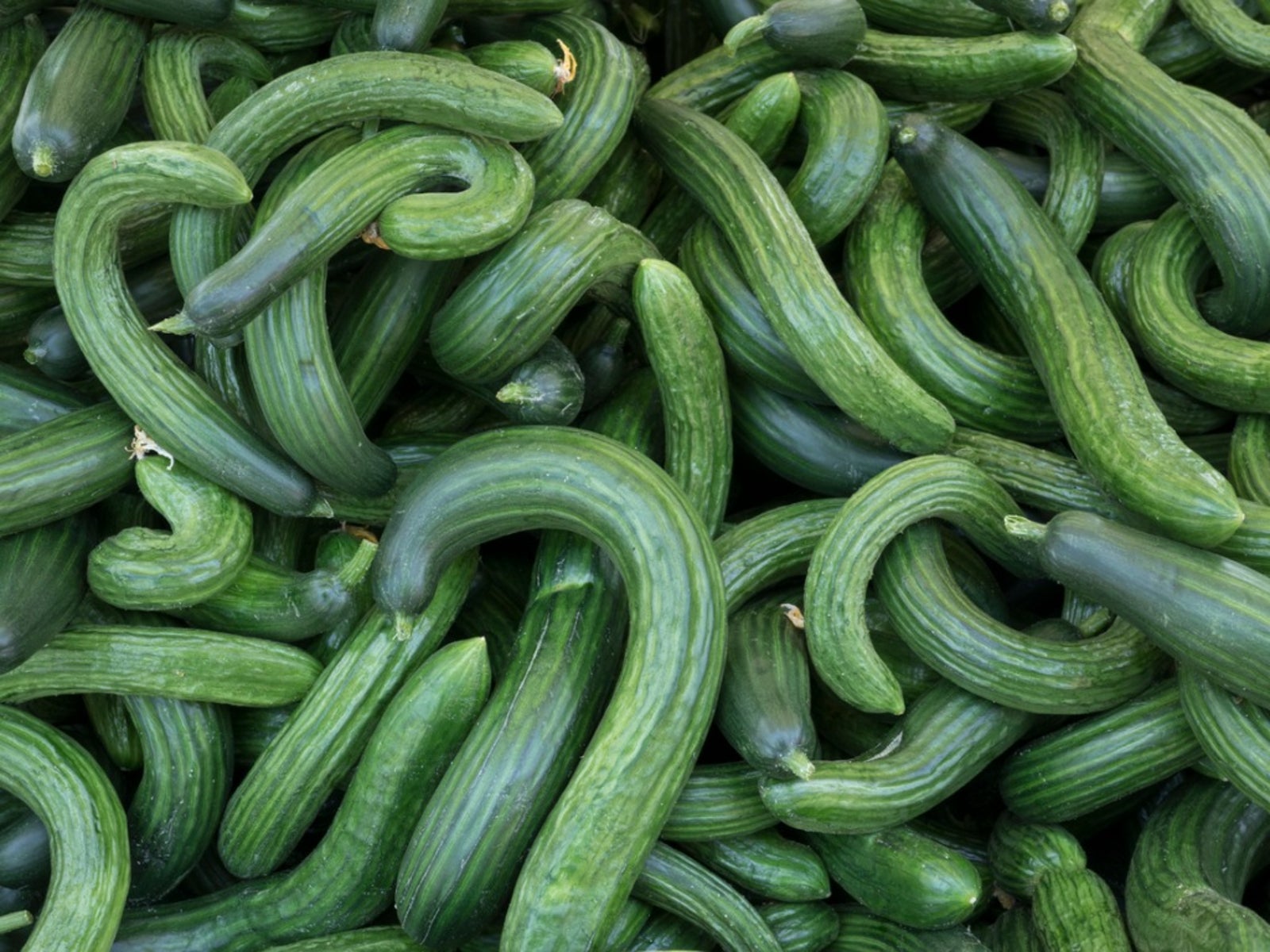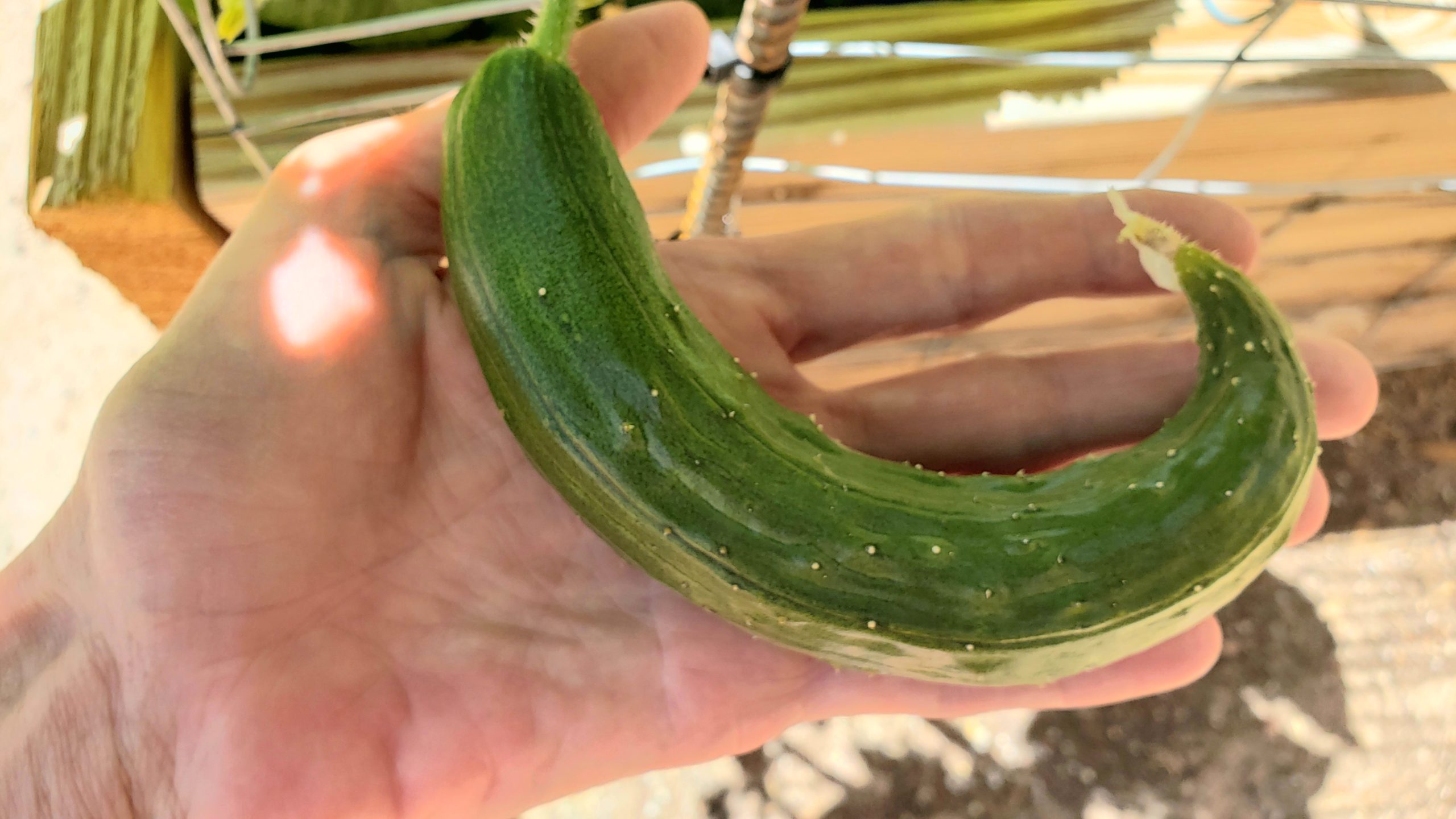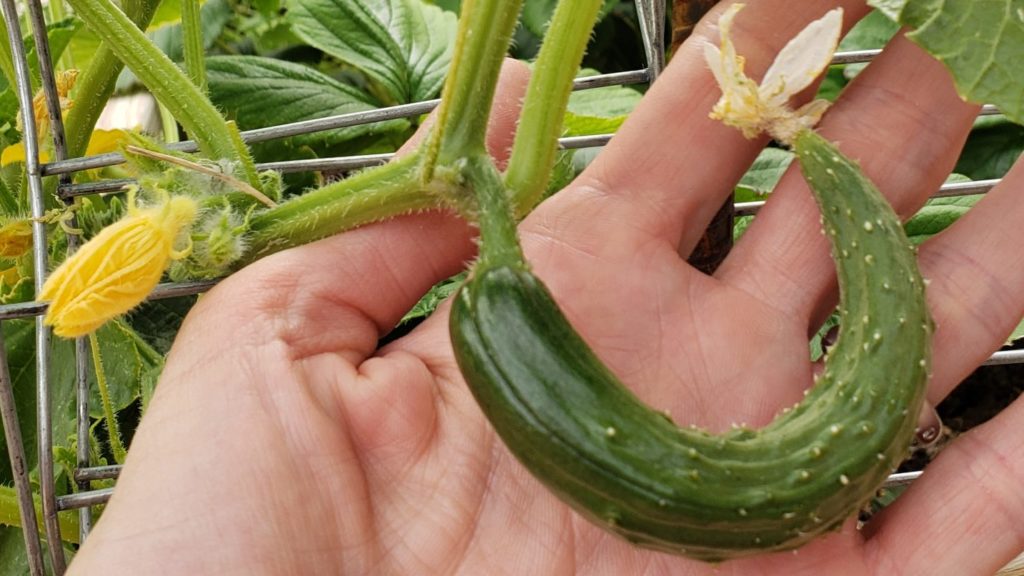So, you’ve been growing your own cucumbers, eagerly awaiting the day you can enjoy a crisp, refreshing bite straight from your own backyard. But lately, you’ve noticed something strange – your cucumbers are curling! What could be causing this bizarre phenomenon? In this article, we’ll explore the various reasons why your cucumbers might be curling and provide you with helpful tips on how to prevent it from happening in the future. So sit back, relax, and let’s get to the root of your curling cucumber conundrum.

Environmental Factors
Temperature
Temperature can have a significant impact on the growth and development of cucumbers. If the temperature is too high or too low, it can cause the cucumbers to curl. Cucumber plants thrive in temperatures between 70 and 90 degrees Fahrenheit. If the temperature consistently exceeds 90 degrees, the cucumbers may start curling. On the other hand, if the temperature drops below 50 degrees, it can also affect the shape of the cucumbers. It is important to provide consistent and optimal temperatures for cucumber plants to prevent curling.
Humidity
Humidity levels play a crucial role in cucumber growth. High humidity levels can result in a lack of airflow, which can lead to moisture build-up and leaf diseases. Excessive moisture around the developing cucumbers can cause them to curl. On the other hand, low humidity levels can cause the cucumbers to dry out and become dehydrated, leading to curling. Maintaining a moderate humidity level between 50-70% is essential for healthy cucumber growth and preventing curling.
Light
Proper lighting is essential for cucumber plants to thrive. Insufficient or excessive light can cause the plants to experience stress and affect the shape of the cucumbers. If the cucumbers are not receiving enough light, they may grow in odd directions, resulting in curling. Additionally, if the cucumbers are exposed to excessive direct sunlight, they may become dehydrated and curl. Providing the cucumber plants with full sun exposure for 8-10 hours per day while ensuring some shade during the hottest part of the day can help prevent curling.
Wind
Wind can be both a blessing and a curse for cucumber plants. While a gentle breeze can help with pollination and strengthen the plants, strong winds can cause physical damage and lead to curling. Windy conditions can hinder pollination by preventing the transfer of pollen, resulting in incomplete pollination and curled cucumbers. To protect cucumber plants from excessive wind, consider providing a windbreak or stake them securely to prevent damage.
Watering and Irrigation
Underwatering
Underwatering can cause cucumbers to curl as it leads to insufficient moisture absorption and stress on the plants. When cucumber plants do not receive the necessary amount of water, the leaves can wilt and curl, affecting the overall growth and development of the cucumbers. It is important to consistently water cucumber plants, ensuring that they receive enough water to keep the soil evenly moist without becoming waterlogged.
Overwatering
Overwatering can also contribute to cucumber curling. When the soil becomes waterlogged, it can inhibit oxygen flow to the roots, resulting in root rot and stunted growth. Overwatered cucumber plants may also develop swollen, misshapen fruits, including curled cucumbers. It is crucial to monitor the soil moisture level and water the plants evenly, allowing the soil to dry out slightly between waterings.
Inconsistent Watering
Inconsistent watering practices can cause stress to cucumber plants and lead to curled cucumbers. Fluctuations in soil moisture levels can disrupt the growth patterns, resulting in irregular cucumbers. It is important to establish a regular watering routine, ensuring that the plants receive a consistent supply of water throughout their growth cycle.

Nutrient Imbalances
Lack of Calcium
Calcium deficiency in cucumber plants can contribute to curled and misshapen cucumbers. Insufficient calcium can cause blossom end rot, which manifests as a dark, sunken area at the blossom end of the fruit. This condition can lead to the deformation and curling of the cucumbers. Providing a balanced fertilizer with adequate calcium and maintaining proper soil pH levels can help prevent calcium deficiencies and promote healthy cucumber growth.
Excessive Nitrogen
Excessive nitrogen levels can negatively impact the growth and development of cucumbers, including causing them to curl. When cucumber plants receive an excess of nitrogen, they may prioritize leaf growth over fruit development. This imbalance can lead to misshapen and curled cucumbers. It is important to maintain a balanced nutrient supply, avoiding excessive nitrogen fertilization, to prevent such issues.
Phosphorus Deficiency
Phosphorus deficiency can also contribute to the curling of cucumbers. Insufficient phosphorus can hinder root development and nutrient absorption, affecting overall plant health. Cucumber plants lacking phosphorus may exhibit stunted growth and produce curled fruits. Applying a phosphorus-rich fertilizer or amending the soil with organic matter can help address phosphorus deficiency and promote healthy cucumber growth.
Pollination Issues
Incomplete Pollination
Incomplete pollination occurs when the female flowers of the cucumber plant are not adequately fertilized by pollen. This can result in the development of misshapen and curled cucumbers. Inadequate pollination can be caused by various factors, including a lack of pollinators or poor weather conditions. To enhance pollination, it is helpful to attract pollinators such as bees to the garden, provide a variety of flowering plants, and avoid the use of pesticides that may harm pollinators.
Poor Pollinator Availability
The presence of sufficient pollinators is crucial for successful cucumber pollination. If there is a limited number of pollinators in the area or if the flowering period of the cucumber plants does not align with the peak activity of pollinators, it can lead to poor pollination and curled cucumbers. To address this issue, consider planting companion plants that attract pollinators, creating a pollinator-friendly environment, or even hand-pollinating the cucumber plants to ensure adequate fertilization.
Genetic Factors
Varietal Susceptibility
The genetic makeup of different cucumber varieties can contribute to their susceptibility to curling. Some cucumber varieties may be more prone to curling than others, even under optimal growing conditions. When selecting cucumber varieties, it is important to research and choose those known for their resistance to curling or other growth abnormalities.
Seed Quality
The quality of the cucumber seeds used can also influence the growth and development of the plants. Poor-quality seeds may result in weak plants and increased susceptibility to curling and other issues. It is advisable to purchase seeds from reputable suppliers known for high-quality seeds to minimize the risk of genetic factors contributing to cucumber curling.
Pest and Disease Problems
Cucumber Beetles
Cucumber beetles can wreak havoc on cucumber plants, causing damage to both the foliage and the fruits. These pests can transmit diseases and lead to curling and deformation of the cucumbers. It is important to employ pest control strategies such as handpicking, using insecticidal sprays, or implementing physical barriers to protect cucumber plants from cucumber beetle infestations.
Bacterial Wilt
Bacterial wilt is a common cucumber disease caused by the bacterium Erwinia tracheiphila. This disease can cause wilting, yellowing, and curling of the cucumber plants. Bacterial wilt is primarily transmitted through the feeding activity of cucumber beetles. Implementing proper pest control measures and practicing good garden hygiene can help prevent bacterial wilt and minimize curling in cucumbers.
Cucumber Mosaic Virus
Cucumber mosaic virus is a viral disease that can significantly impact cucumber plants. Infected plants may exhibit symptoms such as mosaic patterns on the foliage, stunted growth, and curling of the cucumbers. This virus is often spread by aphids and can lead to severe yield losses. Implementing measures to control aphids and practicing crop rotation can help prevent the spread of cucumber mosaic virus and protect cucumber plants from curling.

Improper Pruning or Training
Improper Tying
Properly training and supporting cucumber plants is essential to prevent curling. If the plants are not properly tied or supported, the weight of the fruit and vines can cause them to curl or droop. It is important to regularly monitor the growth of the cucumber plants and provide appropriate support, such as trellises or stakes, to keep the vines upright and prevent curling.
Excessive Pruning
While pruning can be beneficial for cucumber plants, excessive pruning can lead to curling. Pruning too many leaves and stems can result in reduced photosynthesis and stress on the plants, leading to curled cucumbers. It is recommended to follow proper pruning techniques and avoid excessive removal of healthy foliage to maintain a balance between vegetative growth and fruit development.
Soil Issues
Compacted Soil
Compacted soil can hinder root growth and nutrient absorption, leading to curled cucumbers. When the soil is compacted, it can prevent proper water drainage and aeration, causing stress to the plants. Regularly cultivating the soil, adding organic matter, and avoiding heavy machinery on the garden beds can help prevent soil compaction and promote healthy cucumber growth.
Lack of Organic Matter
The presence of organic matter in the soil is crucial for optimal cucumber growth. A lack of organic matter can result in poor soil structure, reduced nutrient availability, and compromised water retention, all of which can contribute to curling in cucumbers. Adding compost or well-rotted manure to the soil can improve its fertility and structure, creating a favorable environment for cucumber plants.
Inadequate Drainage
Improper drainage can lead to waterlogging and root rot, negatively impacting cucumber plants. When the soil does not drain well, it can cause excessive moisture around the root system, leading to stress and curled cucumbers. It is important to ensure that the garden beds have proper drainage, either through natural slopes or the use of raised beds, to prevent water accumulation and promote healthy cucumber growth.

Growth Stage
Early Growth
Curling in cucumbers can sometimes be attributed to early growth factors. During the early stages of plant development, stressors such as environmental conditions or inadequate watering can affect the shape of the cucumbers. Providing optimal growing conditions and ensuring consistent care during the early growth stage can help minimize any curling issues.
Later Stages
Curling can also occur during the later stages of cucumber plant growth, particularly if stressors or imbalances persist. As the fruit develops and expands, any abnormalities or imbalances can manifest in the shape and form of the cucumbers. Maintaining proper care, nutrient balance, and environmental conditions throughout the entire growth cycle is crucial to minimize curling during the later stages.
Other Factors
Chemical Exposure
Exposure to certain chemicals can negatively impact cucumber plants and contribute to curling. Pesticides and herbicides can cause stress and damage to the plants if not used correctly or in excessive amounts. It is important to read and follow the instructions on chemical products and avoid spraying them near cucumber plants during sensitive growth stages to prevent curling and other adverse effects.
Physical Damage
Physical damage to cucumber plants can lead to curled cucumbers. Accidental damage, such as bending or breaking the vines, can disrupt the normal growth patterns and result in deformed fruits. It is important to handle cucumber plants with care and take precautions to avoid any physical damage that may contribute to curling.
By understanding and addressing the various factors that can contribute to cucumber curling, you can take proactive measures to promote healthy cucumber growth and minimize any issues. Providing optimal growing conditions, maintaining proper watering and nutrient levels, protecting against pests and diseases, and ensuring appropriate support and training can help you grow beautiful, straight cucumbers that are a delight to harvest and enjoy.



